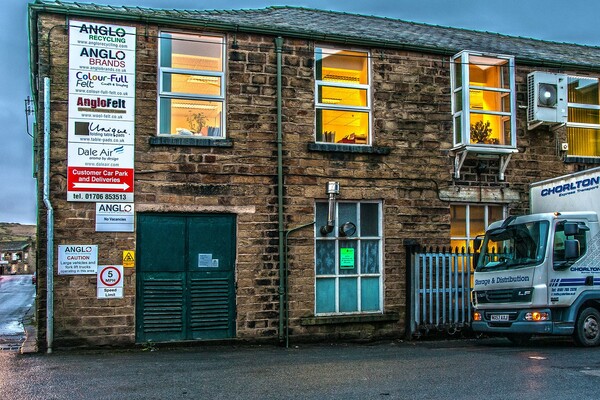
Note: The UK Impact Investing Market report published 16.9.24 is available here.
A Journey in Money
John Wesley once said, “The last part of a man to be converted is his wallet.” In terms of faith, money is really where the rubber hits the road. For me, it was something of a second conversion. I became a Christian in February 1980, and that Autumn I joined the evangelist Ian Knox on a mission at Warwick University as a counsellor. In one of his talks, he explained that tithing was just the beginning, real giving started when we went beyond tithing.
Plan A for my life was to start a business, sell it, and make pots of money. Money is a brilliant invention, a means of exchange and a store of value. But it has a darker spiritual side and I was in danger of becoming a money addict. I wanted to use money to prove my success. So starting with this message from Ian, and the Richard Foster’s book “Money, Sex and Power”, God began a process where I learnt to defile money by giving it away and breaking its hold on me.
More recently, I read Dr Kim Tan’s book “The Jubilee Gospel”. What came across to me was that the whole idea of tithing was something of a cop out. Jubilee in the Old Testament was in a time when wealth was measured by land and possessions. Land redistribution every 50 years prevented excessive inequality. Jubilee is not about giving to the poor but about economic justice. By New Testament times, wealth was measured in money. Jubilee was central to Jesus’ manifesto, work and teaching; and his focus was especially around money, personified as Mammon. The Sermon on the Mount goes beyond the law and includes radical generosity: if someone wants your shirt, give him your cloak as well (Mat 5:40). Giving in the early church was spontaneous, flexible and voluntary. Private possessions continued but followers of Jesus did not consider them to be their own. “There was no needy among them” (Acts 2:44-47; Acts 4: 32-35). This radical approach was missional: the church grew rapidly.
The Church began to promote tithing when Christianity became the Roman religion. The early radical discipleship approach did not sit well with an increasingly rich and hierarchical church. Tithing was a more comfortable approach and it changed the relationship between the giver and the recipient: it was no longer about justice but about the rich donor giving alms in response the pleas of the poor. It was also only about income, not the redistribution of capital required of Jubilee.
Groups who tried to revert to the communal approach of the early church (Franciscans, Waldensians, Anabaptists) were often persecuted, as they exposed the hypocrisy and complacency of the established church (though many monastic groups became less radical over time).
Creating and holding wealth is never condemned in the Bible. It’s how we make money (avoiding exploitation) and our attitude towards wealth that is key, recognising that “Everything comes from you, and we have given you only what comes from your hand” (1 Chronicles 29:14).
What does this mean in practice?
A fundamental sign of faith is that we are giving money away. It’s for our own spiritual health, as much as because of need. For all its faults, it seems to me that tithing sets an initial marker. And to those whom God has given much, more is expected. But it’s about heart and faith rather than a legalistic approach. Most Christians also give away a significant amount of time to their church or for voluntary activities.
What about possessions? Are our homes fully available for hospitality and other Kingdom purposes? I used to make it known that anyone could borrow our car and I had it insured for anyone. But then insurance became more difficult and expensive. We are fortunate to have a narrow boat moored next to the house, and that is available and has been used as a free retreat by church leaders and as a holiday home for families in need.
Transcend
All this is straightforward and undoubtedly practiced by TEN members. The more complex issue is what we do with our capital. Having worked for myself most of my career, I have no occupational pension. I have been building a pension pot, with about half the assets in a SIPP and half in an ISA. These have both been invested in a portfolio diversified across geographies and assets classes with a light ethical filter. They have done well and a few years ago reached the target I set as able to generate a modest pension. I have also used some of the capital to invest in my impact business Transcend; and to provide some loans or equity for friends involved in social enterprises and Christian ventures, usually on an informal basis. Results have been mixed.
Today my pension pot is worth more than my inflation adjusted target. This year we decided on a cap to our investable assets (i.e. pension pot), and every March, and give away 100% above this or invest it in a completely different way where the main purpose is social impact. Giving is fine but as someone once pointed out to me, it’s a 100% capital loss. What if it could be re-used many times to support enterprises that provide a long term solution to poverty?
One of my most moving experiences at TBN was visiting Hagar International in Phnom Penh. Hagar cares for women and kids rescued from trafficking. They were a number of businesses which provided sheltered employment and training, for example, a restaurant and a contract catering business. I also visited Bulembu, an entire abandoned mining town in Swaziland (now Eswatini), being brought back to life on a social enterprise model. Swaziland has the highest HIV rate in the world and Bulembu’s particular purpose was to care for and educate AIDS orphans.
As it happened, a TEN member in a similar situation wanted help on impact investment so I have been exploring options. Here are some ways forward.
Impact Investment options
Important note: what follows isn’t personal advice. If you’re not sure whether an investment is right for you please seek advice. If you choose to invest, the value of your investment will rise and fall, so you could get back less than you put in.
Listed ethical or “ESG” investment funds apply a filter to avoid investing in the bad guys (defined in many different ways). Impact investment funds are different in that they seek out businesses – usually unlisted – where the prime purpose is social, environmental or spiritual, or a combination of these. They are financially sustainable i.e. for-profit businesses, but financial is only one “bottom line”. Usually this means that the financial rate of return is lower than other businesses, but there are other returns, such as creating jobs for refugees or other impoverished or disadvantaged groups. Here are some options.
This is a small Christian fund that was linked with Transformational Business Network for many years and is now a member of TEN. “We manage an investment fund capitalized by a private, global community of international investors, which supports the growth of Christian owned and managed SMEs across North Africa, the Middle East and Asia. The Fund provides loans and/or equity to carefully screened, Christian-owned and managed SMEs in the region and invites the participation of like-minded Christians who, through stewarding a portion of their resources in genuine, transformational business activity, are able to demonstrate justice, kindness and humility before God in a practical way.” The fund aims to keep value of the capital, but do not pay interest or dividends. Minimum investment is $5k. Investors can be mentors if they wish. My personal view is that this is a specifically Christian set up run by good people offering ways to personally engage our skills and capital with a relatively low bar to entry.
Loan money to TEN member Green pastures, received a 5% return and help end homelessness! Minimum £1,000 for a minimum 1 year. On average £30,000 provides a home for one person. Take a look at their website.
Talanton invests in values-aligned, growth-stage companies in East Africa, especially Kenya, Rwanda and Uganda. They look for companies with revenues of $500K-$5m generally EBITDA positive, good leadership teams and a strong ability to create jobs to help people lift themselves out of poverty. They aim to place $1-3m per client with tranches based on milestones and the performance. Most of their investments are debt/venture debt (debt with royalties). Up to 25% can be equity/warrants/convertible notes, etc. There is a $100K minimum investment. Capital is invested for a minimum of four years and redeemable after that with six months' notice. They target an 8% return, tracked with financial statements delivered quarterly, along with a portfolio impact update. Costs are 2% management and 2% technical assistance fee to support the rapid growth of portfolio companies. Above $50m fund size the fees decline to a total of 2% for invested assets above $100m. Talanton started 2021 with $4.8MM in committed capital and four investees and by the end of the year surpassed $16m in committed capital and 10 clients. Now (August 2024) they have surpassed $30m and invested in more than 20 companies. They are also prayerfully considering launching a second $15m fund to follow up first fund star performers.
Garden Impact Fund (GIF) is based in Singapore and led by Mason Tan, an investment professional who was inspired by Kim Tan (no relation) to move from being a wealth manager for the rich to being “Banker to the Poor”, where he can make a real difference.
This is the other end of a scale from Transformational SME in that it is a formal investment product for “sophisticated investors”. The minimum investment is $200k, with a seven year investment life and with a target return 5% (I understand that earlier versions achieved more than this). If you can manage the minimum investment (without putting all your savings into it), don’t be put off by the formalities and do have a conversation with Mason Tan. What I find impressive is that they meet an important gap for funding SMEs: they would normally invest at around $100k turnover and expect investees to grow to $1m over 5-7 years, at which time a Management Buy Out is likely to be possible (this is their normal exit). As well as being scalable, investees must have a direct social impact, essentially tackling poverty, including disabled people, refugees, ex trafficked women, etc.; they must be financially sustainable and able to make a profit in 3-4 years; and their target area is four hours flying time from Singapore, excluding India and China.
Typically, they make an initial $100k equity investment in the impact business. They use experienced volunteers, committed to their purpose, to advise investees. In effect, GIF become the CFO. There is also an annual review and GIF tries to open doors for their investees to new customers.
Costs are high compared with conventional investments (3% pa + 20% carry above 5% return). This reflects the small size of individual loans. Kim Tan is Chair of the Investment Committee so I believe the investment decisions are in good hands.
Kim Tan is keen to make impact investment available to retail investors through conventional brokers. Hence this fund is a publicly quoted investment trust listed on the London ISDX exchange. So in theory anyone can buy any amount any time. In practice, very low transaction volume means we are not there yet. Unlike trading in a major investment trust or a FTSE 100 company, there are not dozens of people buying and selling at any one time. So it might take weeks to fulfil a request to buy. The fund is mainly focussed on Africa and investments include Kim Tan’s extraordinary Kuzuko Lodge eco-tourism and conservation project.
Snowball is a five year old fund of funds targeting 6-7% return purely in impact investments, minimum £150k for individuals. They access "a diversified portfolio of impact investments which are selected and actively managed to create competitive returns and measurable impact". Snowball is invested across two interconnected themes of social equity and environmental sustainability. The fund is independent, has some good people involved, and is ranked in the top 5% of all B Corporations.
If you prefer a UK focus, take a look at the Resonance web site and click the investor link. Chief Investment Officer Simon Chisholm is a TBN Trustee. Resonance have created and manage a range of social impact investment funds, which invest in “high impact social enterprises.” They currently have over £210m under management across twelve operational funds, which focus on tackling major societal issues, especially homelessness, poverty, community-led projects, health and education. In addition to their investment funds, they say they offer opportunities to invest directly into high impact social enterprises.
Not strictly an impact investment but with many similarities. Like Green Pastures (see above) Hope into Action provides an opportunity for investors – alone or as a group – buy a home for the homeless. Investors retain ownership of the house and lease it to Hope into Action for five years. Hope into Action find, place and support the tenants in the house, do all the maintenance and target a 2% return for the investors. The model is proving very successful. As an investor, you can be as little or as much involved in the purchase and refurbishment of the house as you wish. Each house is linked to a local partner church who provide mentoring and friendship to the tenants.
See also
- https://lendwithcare.org/ (for small amounts);
- https://www.avpa.africa/
- https://chorusnetwork.co.uk/
There are many more options. Do send details of any organisations that you think should be added to the list.
For more information, I recommend Social Impact Investing, by Kim Tan and Brian Griffiths, a short and well written booklet which lays out the case, gives many case studies and lists impact investment funds (mostly aimed at Sophisticated Investors).
There is also a good piece by Stephen Beers here, on a Christian Approach to Investing. The the transcript of a 2018 lecture.
Jerry Marshall








